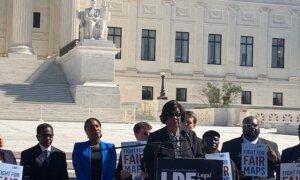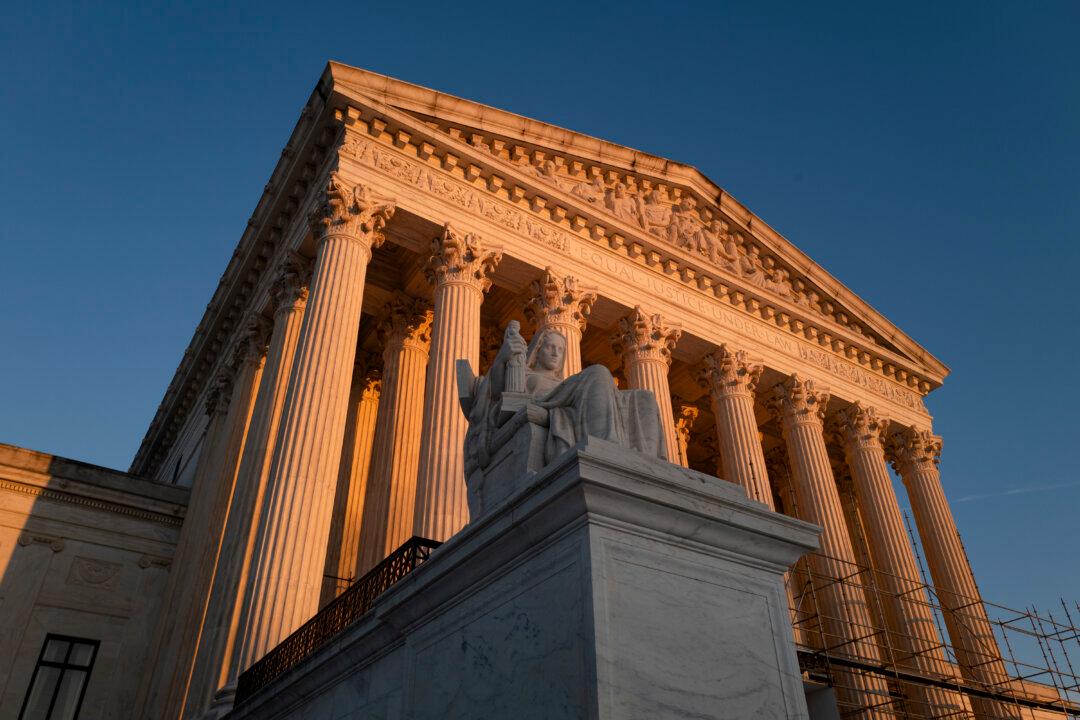All three liberal justices dissented from the Supreme Court’s 6-3 decision on May 23 to uphold a congressional redistricting plan in South Carolina, arguing that the court was wrong not to find the new map was a product of race-based discrimination.
Justice Elena Kagan wrote in her strongly worded dissent that the court’s majority has gone “seriously wrong,” and ignored existing precedent by not showing due deference to the trial court in a decision that will make it more difficult in the future to prove racial gerrymandering.
The justice’s concerns were shared by the National Association for the Advancement of Colored People (NAACP), which, after prevailing in the lower courts, was a respondent in the appeal before the Supreme Court.
Justice Kagan’s dissenting opinion was joined by Justices Sonia Sotomayor and Ketanji Brown Jackson. All three were appointed by Democrat presidents.
The court majority held that challengers failed to demonstrate that race was the main factor in the redistricting, as opposed to more routine partisan considerations.
The Supreme Court frowns on racial gerrymandering as constitutionally suspect but has adopted a hands-off attitude toward partisan gerrymandering.
The seat in South Carolina’s 1st congressional district is currently held by Rep. Nancy Mace (R-S.C.).
Ms. Mace was elected to her second term in 2022 with 56.4 percent of the popular vote, beating Annie Andrews, a Democrat, who won 42.5 percent of the vote. In 2020, she narrowly defeated incumbent Democrat Joe Cunningham by a margin of 50.6 percent to 49.3 percent.
Majority Opinion
In the majority opinion, Justice Alito reaffirmed the court’s position on partisan drafting of electoral district boundaries.Redistricting, which the U.S. Constitution primarily entrusts to state legislatures, is “an inescapably political enterprise.”
“Legislators are almost always aware of the political ramifications of the maps they adopt, and claims that a map is unconstitutional because it was drawn to achieve a partisan end are not justiciable in federal court,” the justice wrote.
If a question is nonjusticiable, it means that it cannot be assessed according to legal principles by a court.
However, if a legislature “gives race a predominant role in redistricting decisions, the resulting map is subjected to strict scrutiny and may be held unconstitutional,” the justice wrote.
There is an inherent tension between partisan preferences and the use of race in redistricting, so a party challenging the constitutionality of a map “must disentangle race and politics if it wishes to prove that the legislature was motivated by race as opposed to partisanship.”
Although the court must begin with a presumption that the legislature acted in good faith, here a three-judge district court panel “paid only lip service” to this presumption.
“That misguided approach infected the District Court’s findings of fact, which were clearly erroneous under the appropriate legal standard,” Justice Alito wrote.
In January 2023, following an eight-day trial, a three-judge district court panel ordered that a new map be drawn for the 1st congressional district, determining that the 2022 map violated the Equal Protection Clause of the 14th Amendment because it had been calculated to dilute the power of black voters.
The redistricting plan “exiled over 30,000 African American citizens from their previous district and created a stark racial gerrymander” to make the 1st congressional district safer for a white Republican incumbent, the panel said.
The district court panel, all of whose members were appointed by Democrat presidents, didn’t receive direct evidence that race was used by mapmakers but relied on experts who said the map couldn’t have been drawn without recourse to racial demographics.
Justice Alito acknowledged that many predominantly black precincts in Charleston were moved into different districts to generate the new map but said this in itself was not proof that race was the motivating factor.
“Because of the tight correlation between race and partisan preferences, this fact does little to show that race, not politics, drove the legislature’s choice.”
The Supreme Court reversed the panel’s decision in part and remanded the case to the district court “for further proceedings.”
In his concurring opinion, Justice Thomas threw cold water on the idea that courts should be involved in adjudicating gerrymandering claims at all.
“Racial gerrymandering and vote dilution claims lack judicially manageable standards for their resolution. And, they conflict with the Constitution’s textual commitment of congressional districting issues to the state legislatures and Congress. They therefore present nonjusticiable political questions.”
Kagan Dissents
Justice Kagan, in her dissent, criticized the majority, stating that its opinion makes it harder for future litigants to prove racial gerrymandering.The key question is whether those who drew the map considered voting data alone, or whether they acted based on the color of the residents, she wrote.
The map makers’ “politics-only story could not account, as a statistical matter, for their large-scale exclusion of African-American citizens.” The panel found the challengers’ version of events more credible and did not believe state officials, she wrote.
“In reviewing those conclusions, the majority goes seriously wrong,” the justice wrote.
The majority was required to give “significant deference” to the district court’s view of events and uphold it so long as it was “plausible.” Had it done so, the state would have had to redraw the district given that the challengers “introduced more than enough evidence of racial gerrymandering to support the District Court’s judgment.”
The majority here “picks and chooses evidence to its liking; ignores or minimizes less convenient proof; disdains the panel’s judgments about witness credibility; and makes a series of mistakes about expert opinions,” Justice Kagan wrote.
“The majority declares that it knows better than the District Court what happened in a South Carolina map-drawing room to produce District 1,” but its opinion betrays “its distance from and lack of familiarity with, the events and evidence central to this case.”
The majority gave “the wrong side” the benefit of the doubt, treating any “possibility” that favors the state as “dispositive,” Justice Kagan added.
The majority also “invents a new rule of evidence to burden plaintiffs in racial-gerrymandering cases,” so that going forward courts will have to draw an adverse inference against map challengers “when they do not submit a so-called alternative map—no matter how much proof of a constitutional violation they otherwise present.”
The majority is encouraging racial gerrymandering by states, she wrote.
The majority is saying, “Go ahead, though you have no recognized justification for using race, such as to comply with statutes ensuring equal voting rights. Go ahead, though you are (at best) using race as a short-cut to bring about partisan gains—to elect more Republicans in one case, more Democrats in another. It will be easy enough to cover your tracks in the end: Just raise a ‘possibility’ of non-race-based decision-making, and it will be ‘dispositive.’”
This will allow map makers to continue “sorting citizens, built on racial generalizations and exploiting racial divisions,” Justice Kagan wrote.
The NAACP expressed displeasure at the majority opinion.
“Today, the Supreme Court has failed the American people,” Brenda Murphy, president of the South Carolina State Conference of the NAACP, said in a statement.
“Voting rights have taken another gut punch, and the future of democracy in South Carolina is dangling by a thread. Make no mistake – we are not backing down from this fight.”







